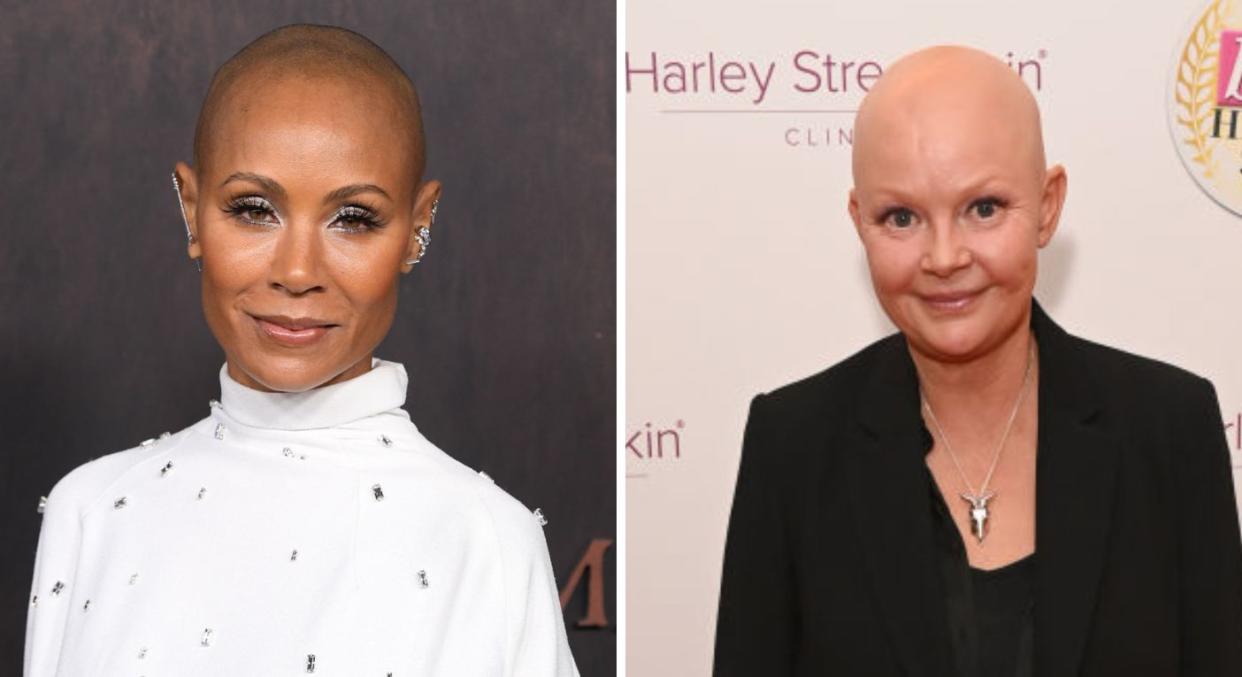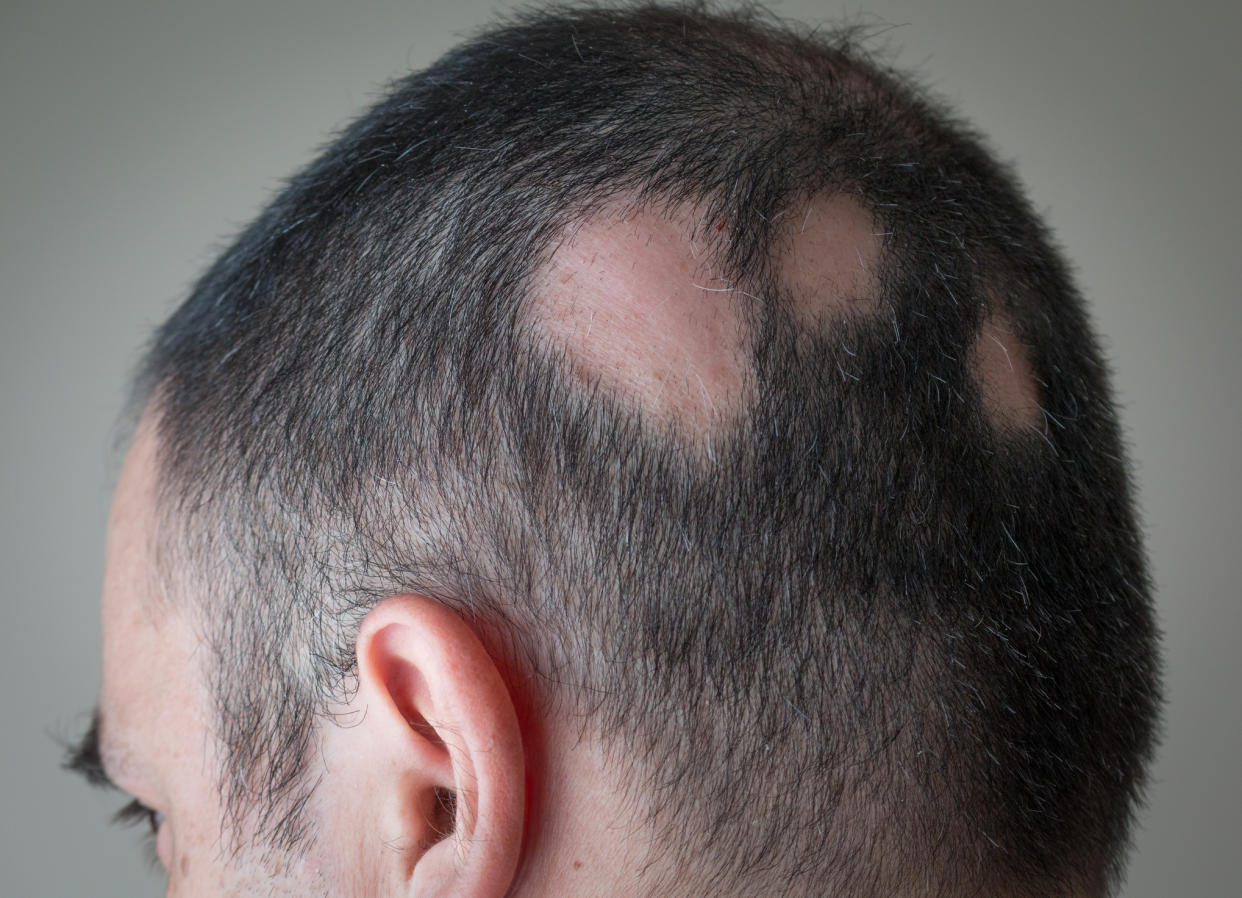Louis Theroux says 'new bald patches appearing’ in alopecia update - what treatments are available?

Louis Theroux has shared an update on the alopecia he believes he may be suffering from.
The 53-year-old documentary maker gave the update on Instagram, explaining he believes the condition is impacting another area.
"Alopecia update (try to remain calm!)," he wrote alongside a selfie. "New bald patches are appearing in my 'top hair' (the hair on top of my head) BUT I can now grow a weird straggly and rather sparse white beard. So that’s something." He went on to add that he has also noticed "some tiny patches of regrowth on my eyebrow".
"FWIW I’ve been taking vitamin D, iron, and something called biotin. Is it helping? Who knows?" Theroux added.
Earlier this year the broadcaster told his followers he "probably" has alopecia after sharing that he has experienced hair loss in his beard.
In an Instagram post, Theroux shared a series of photos highlighting how his facial hair has changed in recent months. In the accompanying caption he told his 763,000 followers: "So this is what my beard grows like now due to what I think is probably alopecia. Basically I get a little triangle of stubble around my mouth and some more at the sides."
He later shared how he believes the alopecia has moved to another area of his body - his eyebrows.
"Oh jeez it looks like the alopecia has migrated up to my eyebrow," he wrote on Instagram. "I realise you aren’t all awaiting every update on its progress but I want people to acclimatise to the new partially depilated me and not freak everyone out by suddenly appearing in public like a half-plucked elephant bird with no forewarning. "
Theroux went on to say that he hoped he would be able to "keep my eyebrows" but accepted it may be out of his hands.
Male hair loss and alopecia: Read more
Hair loss: Signs, symptoms, causes and treatments (Yahoo Life UK, 6-min read)
Jada Pinkett Smith Shows Off Her Hair’s ‘Come Back’ Amid Alopecia Journey (HuffPost, 1-min read)
Lee Mead 'not embarrassed' to discuss hair transplant: 'It's so common but men don't speak about it' (Yahoo Life UK, 5-min read)
I lost all my hair after my dad died and was diagnosed with alopecia (Yahoo Life UK, 10-min read)
What is alopecia areata?
According to the charity Alopecia UK, alopecia areata is believed to be an autoimmune condition, which often starts with isolated patches of hair loss.
The patches, commonly in one or more coin-sized areas, are typically found on the scalp and/or across the body including the beard, eyebrows, eyelashes or body hair, including pubic hair.
"In alopecia areata, cells from the immune system (a specific type of T cell, known as NKG2D+ T cells) gather around the hair follicles," the charity explains.
"These cells attack the follicle, stopping it from producing more hair. The exact way in which this happens is not yet understood.
Theroux isn't the only one to document his experiences of alopecia, Jada Pinkett-Smith and Gail Porter have also spoken openly about their own hair loss journeys.

What is alopecia barbae?
Alopecia barbae is a specific form of alopecia areata, in which hair loss affects the beard and moustache.
"Usually, it comes on suddenly and you begin losing beard hair in small circular patches," explains Anabel Kingsley, brand president and trichologist at Philip Kingsley.
While alopecia barbae can occur only in the beard area, it can also happen alongside hair loss in other areas, such as the scalp.
Alopecia barbae usually causes beard hair to fall out in small circular patches. If more hair is falls out, the circles can begin to overlap.
According to Alopecia UK, hair around the edge of the patches sometimes turns white.
What are the symptoms?
In some people alopecia barbae can appear gradually, while for others it can come on quite suddenly.
One of the first symptoms, according to Gillette UK, are small bald circular patches in your beard that gradually get larger in size.
The skin around these bald patches may also start to feel itchy or painful before you start losing your hair and some people can experience skin irritation, inflammation and redness in the patchy bald areas.

Treatments for alopecia areata
According to Alopecia UK, there is currently no cure for alopecia areata, however, there are a variety of treatments to try, although none are guaranteed to work.
Many people experience spontaneous regrowth without treatment and treatments are more likely to be effective in milder cases of alopecia areata, with small patches of hair loss.
Common treatments for alopecia areata include corticosteroids (designed to dampen down the immune response) and topical immunotherapy (to distract the immune response).
There are also some cosmetic treatments including beard transplants, with one Harley Street surgeon reporting a spike in beard transplant enquiries recently.
Harley Street surgeon Dr Asim Shahmalak from Crown Clinic claims he has had a 25% rise in bookings in recent years.
Dr Shahmalak said: "A proper, full-grown beard has been the ultimate definition of masculinity for centuries. But the sad truth is that many men in Britain struggle to grow beards, sideburns and moustaches. They have significant gaps in their facial hair and the end result can look patchy and unconvincing."
Dr Shahmalak claimed more men are turning to surgery to get their facial hair bolstered with hair transplants so that they have a fuller beard with no gaps.


